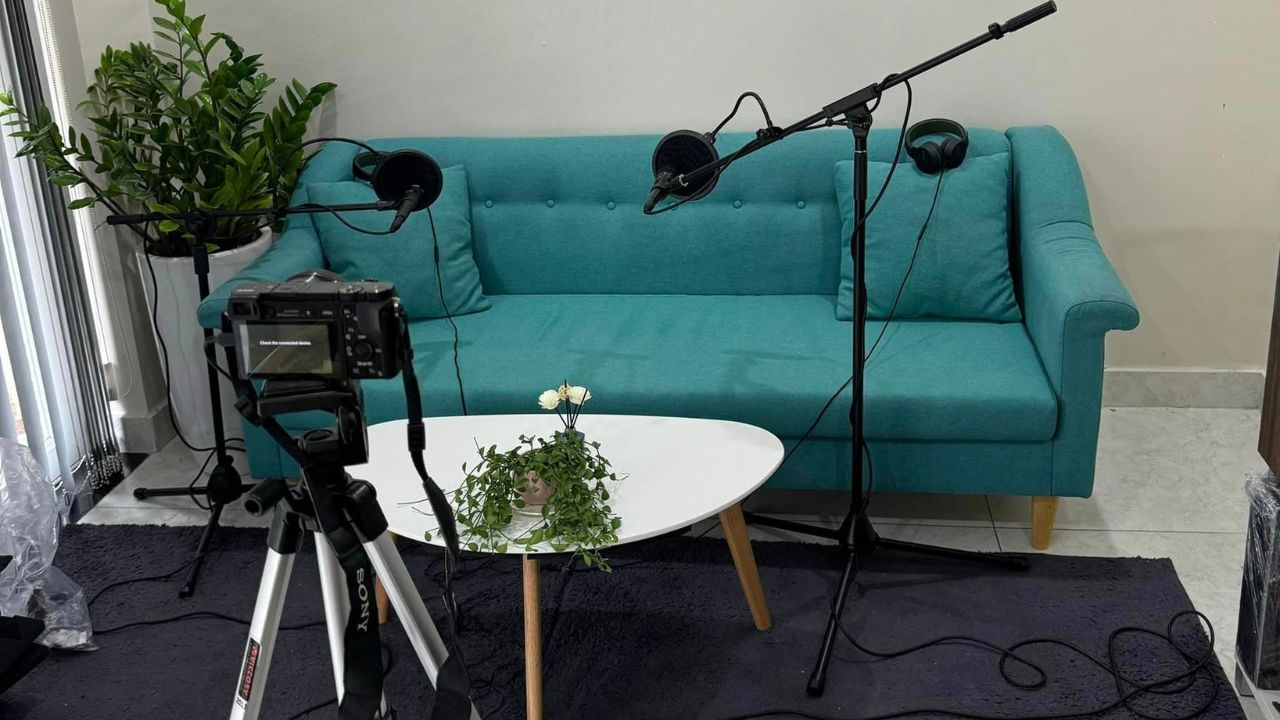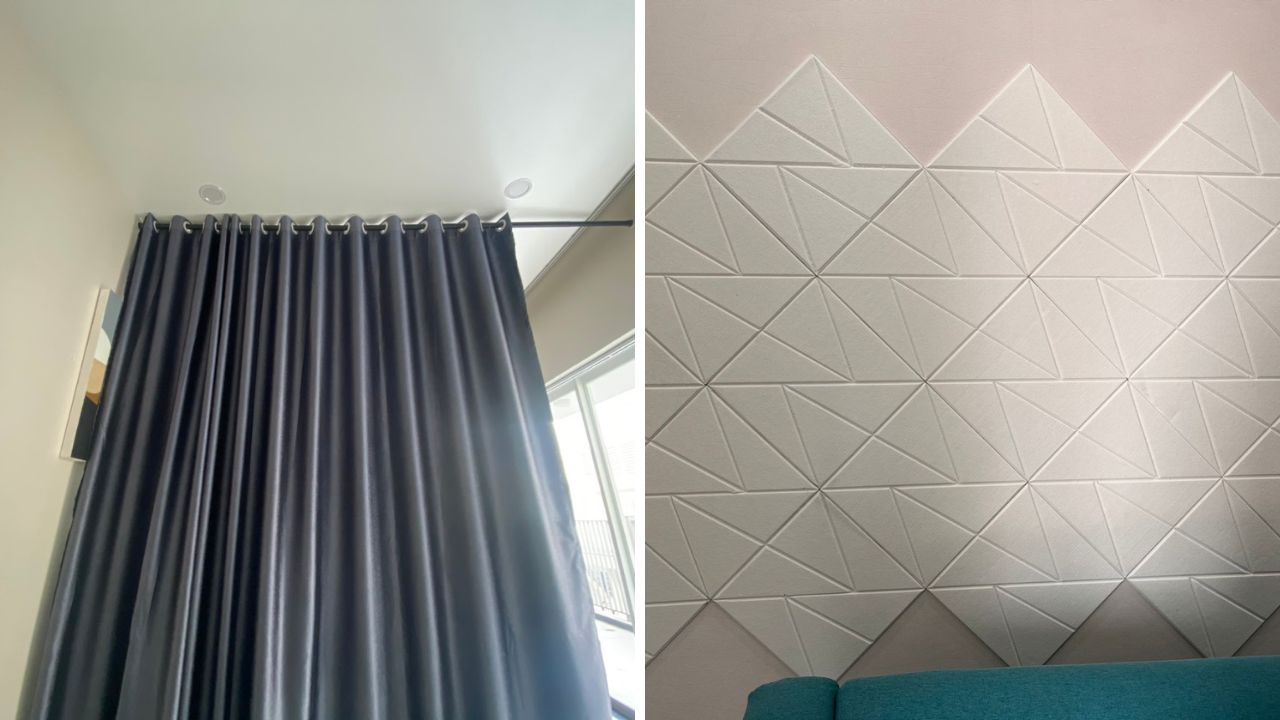Audio quality is the most important element contributing to your podcast success. Even more so than the content! However, how to remove podcast background noise is always the white noise of frustration.
I’m Niall Mackay, founder of Seven Million Bikes Podcasts. When I first started, I always had problems with audio quality, and the reason was background noise. I didn’t have a professional studio and didn’t know how to optimize my home studio as well. Therefore my recording usually had unwanted noise from the environment. I know some of you out there also face the same problem.
I’ll walk you through proven strategies to prevent these unwanted noises from creeping into your recordings in the first place. You’re also equipped with some strategies to remove these noises in the editing process.
Table of Contents
Understanding Background Noise
Background noise is the unwanted sound present in any environment that can interfere with the clarity and quality of audio recordings. Understanding the nature of background noise is crucial for podcasters seeking to create professional-grade audio content.
Sources of Background Sound
There are many types of background sounds and they come from different sources. Let’s break them down to see if have you ever let these sounds in your recording.
Environmental Noise
- Outdoor Traffic:
Even if the recording location is indoors, the loud traffic noise can still seep through windows, doors, and walls, especially during peak traffic hours.
I live in Vietnam where people mostly ride motorbikes. The loud noise of passing vehicles, honking horns, and screeching brakes are unpreventable. At first, I always try to avoid recording during peak hours because the traffic noise is terrible.
- Construction
Construction work is often conducted during daytime hours when podcasters may be recording, leading to unavoidable clashes between recording sessions and construction activities.
I had the worst recording experience ever. When I was about to record my episode with my guest, the next-door house started to construct something and I had to find a space in another place immediately.
After this, I dreamed about having a professional studio that could prevent all these annoying situations. And now my dream comes true. If you’re in Saigon and looking for a podcast studio, here Seven Million Bikes Podcasts provides you with a top-notch studio in downtown Saigon. With the high-quality equipment, hosting, and editing service, you only need to record your podcast and leave the burden to my team.

Mechanical Noise
Mechanical noise is caused by vibrations and disturbances generated by mechanical sources in the recording environment. It often manifests as low-frequency rumbling, clattering, or creaking sounds.
Many podcasters ignore these sounds because they don’t even notice them. However, the microphone can capture all these noises:
- Air-conditioner, heaters
- Clatter of Keyboards
- Fridge, washing machine, and so on
- Notification: phones, machines
Next time, make sure to turn off these devices if you can.

Human Noise
Human noise refers to sounds produced by human activity in the recording environment. Even the host can make background noise:
- Footsteps
- Voices
- Coughs and Sneezes
- The host: heavy breathing, drinking water, tapping fingers
Be aware of these if you have other ones in your recording space, especially for podcasters using a home studio.
Impact of Unwanted Background Noise on Podcast Quality
Distraction
Background noise can distract listeners from the main content of the podcast, making it difficult for them to focus on the speaker’s message. Whether it’s the sound of traffic outside, construction work nearby, or a buzzing air conditioner, unwanted noise can draw attention away from the podcast’s subject matter and diminish the overall listening experience.
Reduced Clarity
Background noise can obscure the speaker’s voice and reduce the clarity of the audio. This can make it challenging for listeners to understand what is being said, particularly if the noise is loud or persistent. As a result, important information or key points may be missed, leading to listener frustration and disengagement.
Professionalism
High-quality audio is essential for creating a professional podcast that resonates with podcast listeners. Background noise can detract from the professionalism of a podcast, giving the impression that the content is amateurish or poorly produced. This can undermine the credibility of the podcast and make it less appealing to potential listeners.
I know how frustrating it is to deal with unwanted noises, so scroll down, I will provide you with practical tips and skills to have polished audio.
How To Avoid Podcast Background Noise – Best Practices and Tips
1. Equipment
Microphone
When it comes to quality equipment for podcasting, podcast microphones are perhaps the most crucial component. There are 2 common types:
- Dynamic Mic: Dynamic microphones are durable, versatile, and less sensitive to background noise compared to condenser microphones. They are ideal for recording in environments with ambient noise and can handle high sound pressure levels without distortion.
- Condensor Mic: Condenser microphones offer a wider frequency response and greater sensitivity, resulting in detailed and accurate audio capture. They are preferred for studio environments with controlled acoustics and quieter recording conditions.
To sum up, if you’re in a noisy environment, you should choose a Dynamic microphone. If you want detailed audio capture, use a Condenser Microphone but make sure to minimize the noise.
Pop Filter
A pop filter, also known as a pop shield or windscreen, is a physical filter placed in front of a microphone to reduce plosive sounds and wind noise caused by airflow from speech.
Pop filters are essential for achieving clean and clear vocal recordings, especially when recording close-mic vocals or spoken word content. They effectively diffuse and disperse the airflow from plosive consonants such as “p” and “b,” preventing them from overloading the microphone’s diaphragm and causing distortion.

2. Soundproofing
Soundproofing is a crucial aspect of creating a controlled acoustic environment for podcast recording. It involves implementing measures to reduce or block the transmission of sound from outside sources into the recording space, as well as fewer sounds escaping the room and causing disturbances to others.
- Sound-absorbing panels, foam seals, and diffusers to minimize echoes, reverberation, and unwanted reflections within the room.
- Sealing Gaps and Cracks
- Acoustic foam, mass-loaded vinyl (MLV), cork tiles, or acoustic insulation
- Soundproofing Curtains and Drapes

How To Remove Podcast Background Noise – Best Tools and Skills for Post-Production
If you find yourself in a situation where you couldn’t prevent all the background noise during recording or discover unwanted noise in your recording afterward, don’t worry – there are still ways to salvage your audio and improve its quality.
Leverage Audio Editing Software
Several software options are available for eliminating background noise in audio recordings, each offering various features and capabilities. Most of these are AI podcast editing tools that incorporate AI features so it’s not a time-consuming task anymore. Some of the best software for this purpose include:
Audacity
This is a widely used, free, and user-friendly audio editor. It offers basic noise reduction tools that can be effective in eliminating low-level background noise.
Because it’s free, it will be more suitable for beginners who don’t have a large budget, and of course, it may not be ideal for complex noise removal tasks.
Descript
Descript offers built-in noise reduction tools that allow users to remove background noise and improve the overall audio quality of their recordings. Users can apply noise reduction filters to specific sections of audio or the entire recording, helping to eliminate distractions and improve clarity.
- One-Click Simplicity: No technical expertise required! Simply upload your audio and with a single click, Studio Sound can analyze your recording and remove podcast background noise, room echo, and unwanted sounds.
- AI-Powered Precision: Descript’s artificial intelligence isolates and enhances your voice while leaving unwanted noise behind. Unlike traditional noise reduction tools that can leave your voice sounding muffled, Studio Sound prioritizes preserving the natural quality of your speech.
Cleanvoice
It’s a tool that uses AI technology to detect and remove unwanted background noise automatically.
- Heavy Breathing Removal: Heavy breathing can be a common issue during interviews or recordings under pressure. Cleanvoice eliminates this distraction, allowing your content to shine through.
- AI Noise Removal: This core feature effectively removes background sounds, room hums, and other audio distractions, even if you don’t have access to a professional studio environment.
Noise Gate Plugins
What is a noise gate?
Imagine a gatekeeper for sound. A noise gate is an audio processor that acts like a gate, controlling the volume of your recording based on a set threshold. Here’s the breakdown:
- Threshold: This is the volume level the gatekeeper uses as a reference.
- Signal vs. Noise: Sounds exceeding the threshold are considered the “signal” (your voice, interviewee, etc.) and are allowed to pass through the gate.
- Silence the Noise: Any sounds falling below the threshold are considered “noise” (hums, traffic, etc.), and the gate slams shut, effectively silencing them.
By adjusting the threshold and other parameters, you can effectively remove podcast background noise and improve the overall clarity and quality of your podcast recordings.
Editing Service
If you are so tired and desperate with the poor quality of your podcast and you don’t have enough time and persistence to edit, Seven Million Bikes Editing Service is born for you.
My team and I will use all the tools we’ve learned over years of podcasting to help you create an exceptional podcast that your audience will love. Contact me now for a FREE Consultation.
Fine-tuning Your Podcast’s Ambient Sound
Far from being a nuisance, carefully selected background sounds can infuse your podcast with vibrancy, depth, and atmosphere, enriching the listening experience for your audience.
Podcasts can sometimes feel sterile, especially if recorded in a quiet studio environment. A touch of background sound, like the gentle buzz of a bustling coffee shop or the soft murmur of a crowd at a street fair, can inject a sense of life and energy into your recording.
Incorporating ambient noise effectively into your podcast can significantly enhance its overall quality and listener experience. Here are some tips to help you do it right:
- Purposeful Selection: Choose ambient noise that aligns with the theme, mood, and message of your podcast. Moreover, a carefully chosen piece of music can effectively mask background noise like the hum of air conditioners, the distant rumble of traffic, or other minor distractions.
- Subtle Integration: Integrate ambient noise subtly into your podcast, ensuring that it enhances rather than distracts from the main content.
- Transitional Use: Use ambient noise strategically to transition between segments or scenes within your podcast.
- Layering and Mixing: Experiment with layering multiple ambient sounds and mixing them together to create a rich and immersive audio landscape.
Podcast Background Noise – Conclusion
Despite our best efforts, it’s often impossible to prevent every unwanted sound from creeping into our recordings. However, armed with the right skills and tools, we can effectively minimize, mitigate, and even remove podcast background noise to ensure our podcasts maintain a professional and polished sound quality.
By investing in quality equipment, implementing soundproofing techniques, and using audio editing software, podcasters can take control of recordings and produce content that engages listeners.
If you find the editing process so Frustrating like most of my clients do, don’t hesitate to Contact me NOW.



1 thought on “How To Remove Podcast Background Noise”
Comments are closed.